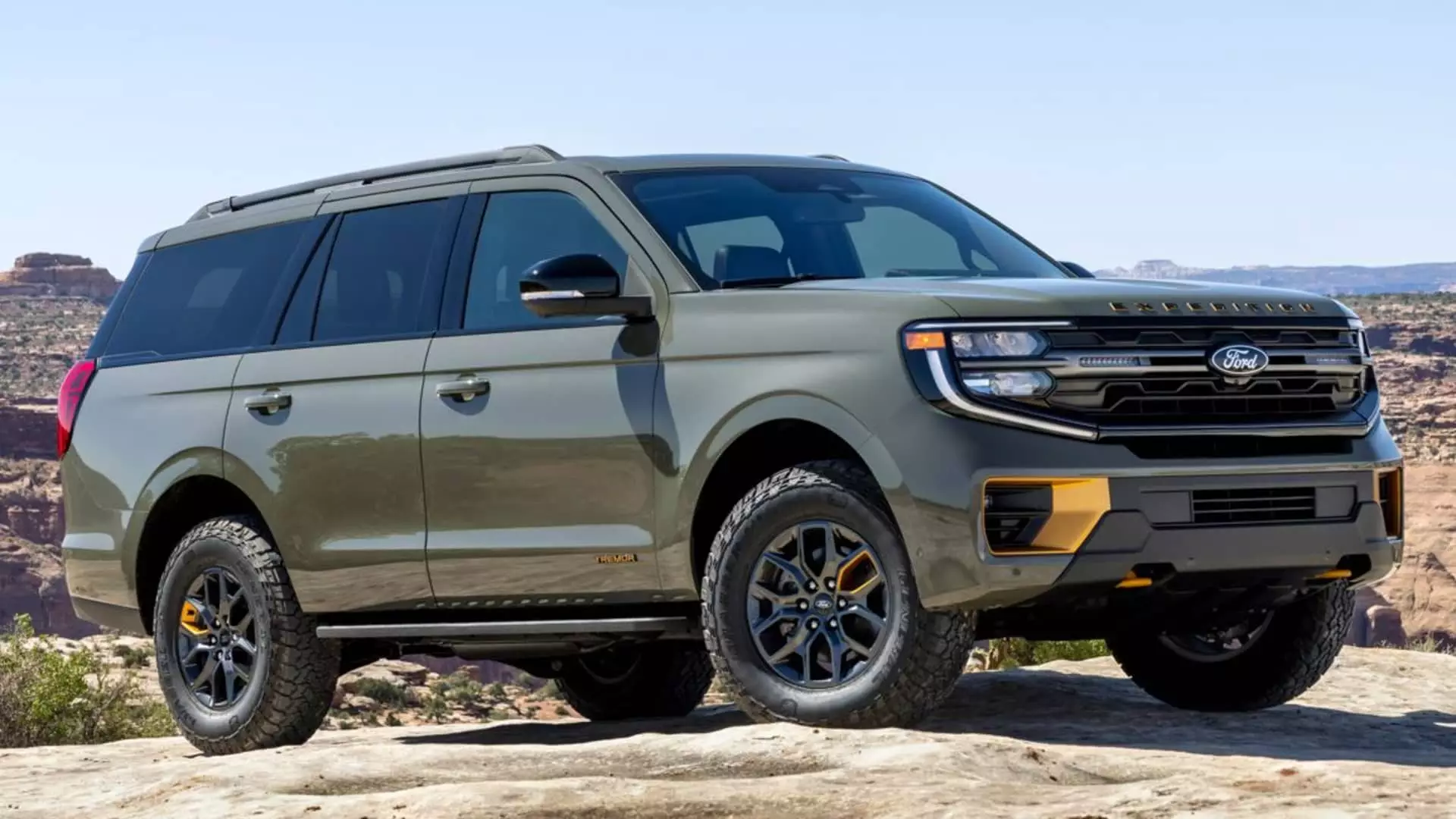Ford Motor Company has taken significant steps to elevate its flagship Expedition SUV in response to intensifying competition in the full-size SUV segment. The latest redesign introduces a host of upgrades aimed at ensuring the Expedition is not just a vehicle but a tool for enhancing family connectivity during travels. By prioritizing conversations with consumers—over 1,100 hours in total—Ford’s design team has gained critical insights that led to substantial improvements in comfort and usability. Trevor Scott, Ford’s general manager of Utilities, emphasizes the design intent to ease the family’s journey together, enhancing their shared experiences instead of merely transporting them.
One of the standout features of the new Expedition is the incorporation of advanced technology. The introduction of a 24-inch driver display signifies an important leap toward a modern driving experience that aligns with current consumer expectations. Additionally, the implementation of Ford’s BlueCruise hands-free driving system serves to further position the Expedition at the technological forefront of the SUV market, introducing an element of convenience that resonates well with tech-savvy shoppers. This ambitious blend of comfort and tech makes the Expedition a formidable contender against its rivals, providing users with an intuitive driving experience.
Although Ford has remained tight-lipped about the pricing for the 2025 Expedition, it continues to attract attention with its previous pricing structure ranging from $55,000 to $84,000. The average transaction price hovers around $70,000, setting a benchmark for consumers who may be considering full-size SUVs as they weigh their options. The shift in competition landscape with rising alternatives like the Jeep Wagoneer and three-row crossovers such as the Kia Telluride and Hyundai Palisade indicates a formidable challenge for Ford. These alternatives offer a mix of lower pricing and spaciousness that attracts budget-conscious families who might otherwise consider the pricier Expedition.
Interestingly, the full-size SUV segment itself has shown promising growth, now representing 2.7% of the U.S. market, a rise from 2% in 2017, as reported by auto data experts at Edmunds.com. With sales figures indicating a total of approximately 312,500 units sold through September, the segment’s growth hints at an increasing consumer appetite for larger, family-oriented vehicles. Ford’s prudent strategy of diversifying the Expedition lineup—offering models like Active, Platinum, King Ranch, and the new Tremor variant—aligns well with market trends, catering to varying consumer preferences and lifestyle needs.
As the 2025 Ford Expedition prepares to hit showrooms, it embodies a pivotal shift in Ford’s approach to large SUVs. The blend of customer feedback, technological adoption, and market adaptation ensures that the Expedition is not just a vehicle, but a thoughtfully designed family companion. It remains to be seen how well these enhancements will resonate with consumers in a dynamic automotive market, but the signs are promising. Ford’s commitment to refining its model and prioritizing customer needs reflects an acute understanding of contemporary consumer desires—translating vehicles into avenues for enhanced family connectivity and adventure.

